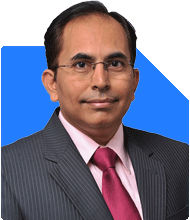Janak Patel |71 Answers |Ask -Follow
MF, PF Expert - Answered on May 14, 2025
He is the CEO and founder of InfiniumWealth, a firm that specialises in designing goal-specific financial plans tailored to help clients achieve their life goals.
Janak holds an MBA degree in finance from the Welingkar Institute of Management Development and Research, Mumbai, and has over 15 years of experience in the field of personal finance. ... more
.jpg)
I am 33 and currently investing Rs.30000/- per month in SIP- Rs.4000/- each in Quant Flexicap Fund And Quant Smallcap Fund, Rs.3000/- each in SBI Smallcap Fund,Axis Growth Opportunities Fund,Motilal Oswal Midcap 150 Index Fund,Motilal Oswal Smallcap 250 Index Fund, Motilal Oswal Microcap 250 Index Fund, Rs.1000/- in SBI Infrastructure Fund and Rs.6000/- in Edelweiss Gold and Silver ETF FoF. I already have an existing portfolio of 17 Lakh in Mutual Funds and 16 Lakh in NPS. What tweaks should I apply so as to maximize my returns and retire in the next 20 years with a total corpus of 5 crores?
I like the simplicity in your query. You have stated very clearly what you have accumulated so far and what your ongoing investment is.
Having said that I feel there is some information missing - your contribution to NPS every year as it will have a bearing on the NPS corpus you will accumulate. But as its not mentioned I will consider only the current amount of 16 lakhs. This amount has a potential to grow between 50 lakhs to over 1.25 crores in the next 20 years, depending on the option of risk and investment composition you have opted for.
The accumulated 17 lakhs in Mutual funds if we consider a rate of 12% return for 20 years, then this will grow to 1.6 crores in 20 years.
Your current SIP of Rs.30000 per month in MFs with assumed returns of 12% for 20years, can grow into a corpus of 2.99 crores.
So yes, you seem to be on your way to a corpus of over 5 crores in 20 years.
Your more important part of the query is what tweaks should you apply to your portfolio.
Remember, the portfolio of investments you have should be taken into consideration as a whole to analyze the risk, return and synergy (complimentary nature) of investments. we always suggest a good diversification and this can be achieved in many ways. For some investors, it can a couple of funds, while for some it may be a portfolio of more funds (recommended to keep under 10). But its important to not over diversify as it will dilute the returns of the portfolio.
As you have not mentioned the MF portfolio details of 17 lakhs, it becomes difficult to decide if the other funds are a good synergy / overdiversification for your combined portfolio.
But I can give you some pointers to help you review and make some updates.
I see the funds you have mentioned have overall - 3 small cap funds, a microcap fund - these funds will tap into the same universe of stocks classified as small cap. Having just 1 is enough.
When picking a thematic/sectorial fund, you need to again look at the fund portfolio as it may have a good amount of overlap with your remaining funds - the Infra fund.
Note - do not keep adding new funds into the portfolio as it not just dilutes your returns, but it also becomes difficult to manage them. With time, their less than desired performance will compel you to make changes more often or give you sleepless nights. So weigh your decision against your own personal behavior and try to keep the overall portfolio simple and manageable. In such a long period as 20 years, a lot of things get equated and hence small portfolio is also good.
Most important is to review the portfolio on yearly basis to see if the funds are performing as per your portfolio expectation. They need not be the best/no.1 funds in their category (as that changes each year), but they need to show consistency and stay above the benchmark and category average in performance. This will ensure that you are on track with your overall objective of the portfolio.
If you are comfortable to do this review by yourself then its great, but if you need help, I suggest you reach out and get a good adviser. For the portfolio you want to create, even a fee based adviser can be a worth the time and money you will eventually save and stay assured of reaching your goal.
I recommend a CFP who can help with this and also do a holistic planning for your retirement as it encompasses many aspects which you may or may not have covered.
Thanks & Regards
Janak Patel
Certified Financial Planner.
You may like to see similar questions and answers below
Ramalingam Kalirajan |10881 Answers |Ask -Follow
Mutual Funds, Financial Planning Expert - Answered on May 29, 2024
Ramalingam Kalirajan |10881 Answers |Ask -Follow
Mutual Funds, Financial Planning Expert - Answered on May 20, 2024
Mayank Chandel |2575 Answers |Ask -Follow
IIT-JEE, NEET-UG, SAT, CLAT, CA, CS Exam Expert - Answered on Dec 13, 2025
Radheshyam Zanwar |6742 Answers |Ask -Follow
MHT-CET, IIT-JEE, NEET-UG Expert - Answered on Dec 13, 2025
Mayank Chandel |2575 Answers |Ask -Follow
IIT-JEE, NEET-UG, SAT, CLAT, CA, CS Exam Expert - Answered on Dec 13, 2025
Mayank Chandel |2575 Answers |Ask -Follow
IIT-JEE, NEET-UG, SAT, CLAT, CA, CS Exam Expert - Answered on Dec 13, 2025
Kanchan Rai |646 Answers |Ask -Follow
Relationships Expert, Mind Coach - Answered on Dec 12, 2025
Ravi Mittal |677 Answers |Ask -Follow
Dating, Relationships Expert - Answered on Dec 12, 2025
Ramalingam Kalirajan |10881 Answers |Ask -Follow
Mutual Funds, Financial Planning Expert - Answered on Dec 12, 2025
Ramalingam Kalirajan |10881 Answers |Ask -Follow
Mutual Funds, Financial Planning Expert - Answered on Dec 12, 2025
Reetika Sharma |423 Answers |Ask -Follow
Financial Planner, MF and Insurance Expert - Answered on Dec 12, 2025
Reetika Sharma |423 Answers |Ask -Follow
Financial Planner, MF and Insurance Expert - Answered on Dec 12, 2025

























